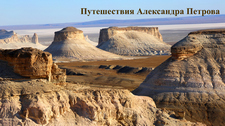You are here
Legend of Khoja Akhmet Yassavi.

Legends of Ancient Mangistau.
“An oath taken at the grave of a saint indicated by the plaintiff is considered perfect proof of the defendant’s innocence; but few dare to take it. The oath-taker must take hold of the pole standing on the grave with both runes and say:
- "I have not seen, I have not heard, I have not drunk, I have not eaten; if I am not telling the truth, may God kill me, may this saint kill me."
"Collection of information about Caucasian highlanders". Legends of Adaevites about saints of Hanafi sect who lived and died in Mangyshlak". Proposed stories are written from words of Kafar Karadzhigitov, Bik-Bulat Yesekenov and Mullah Khodja-Berdy. Issue VII. Tiflis. 1873.
Spread of Islam in Mangistau.
The spread of Islam in Mangistau is closely connected with the name of Khozha Akhmet Yassaui. Quite a few legends about Yassaui have been preserved among the people of Mangistau. Once, shortly before his death, the prophet Muhammad called a certain Baba Arslan, put one grain of nuhud (peas) in his mouth and said:
- “In three hundred and seventy-three years, give this nuhud to Khozha Akhmet, and until that time do not take it out of your mouth,” - then Baba Arslan asked:
- “How can I do this and how will I recognize Khozha Akhmet?”
- "You will live what I have said for many years, you will recognize Khoja Akhmet by the fact that when the people of Turkestan begin to gather in the mosque, he will be the first to enter it and the last to leave," - the prophet answered.
Baba Arslan lived another three hundred and seventy-three years, at the direction of the prophet he recognized Khoja Akhmet and gave him the nuhud. Khoja Akhmet, having received the nuhud, immediately swallowed it and from that time until his death did not eat or drink anything.
He became a great saint, always walked with a stick (asa) in his hands. He had 3,363 murids, according to others - 14,000. After the death of Khoja Akhmet, his murids went in different directions, 362 of them came to Mangistau, where they died, all of them are considered saints, although their names are unknown.
In this legend lives one of the versions of why our region is called the land of 362 saints. According to the author's notes, "Collection of information about the Caucasian highlanders", we have two main saints. These are Hakim ata murid Khoja Akhmet, and his son Sultan-epe (Khubbi).
Once Khoja Akhmet was sitting in the mosque, after the end of the prayer he looked at the students leaving it and saw that one of them was holding the Koran on his head, leaving with his back to the door. Khoja Akhmet called him to him and asked:
- "Why are you carrying the Koran on your head?"
He answered:
- "I consider it indecent to carry it on your shoulders, because it contains God's behavior, I also consider it indecent to turn my back on the teacher from whom I learned the Koran and the rites of religion."
After such a conversation, Khoja Akhmet took this boy to himself for education, taught him, made him his murid and ordered to call him Hakim.
When Hakim, after many years of study, achieved perfection in the knowledge of the tariqa, Khoja Akhmet sent him to Khiva and upon departure said:
- "You are destined to live in this country. Your teaching will make many perfect murids, and you will marry and have children there."
Having listened to all this with attention, Hakim ata set off on a journey riding a camel. A few days later he arrived at the Khiva Sea (Aral Sea). On the shore, at the end of one pasture, the camel Hakim ata stopped, lay down on the ground, and despite being forced, did not want to get up, but only roared.
This place was later called Bakyrgan, which means: roar or cry. This pasture belonged to a khan named Burakhan. His herds grazed on it, the shepherds, seeing Hakim ata, approached him and said:
- "What kind of a man are you that you stopped on his land without our khan's permission? This is impudence on your part."
To which Hakim ata replied:
- "I am a stranger, I want to take refuge here."
- "We will not allow it! Because this is the khan's land," the shepherds shouted and, grabbing their sticks, wanted to beat Hakim ata, but he, turning to the trees growing nearby, said:
- "Stop them!" At that very moment the branches of the trees stretched out and captured three shepherds, the rest fled in great fear and, running to Burakhan, told him what had happened.
Burakhan told his vizier Abdullah that the man the shepherds were talking about must be extraordinary, and ordered him to go and find out everything in detail. The vizier came to Hakim ata and after a polite greeting asked who he was and where he was from.
Hakim ata answered:
- "My name is Hakim ata, my father is Hakim Suleiman, my mentor is Khoja Ahmet Yassaui", "Why are these shepherds detained by the trees?"? - asked Abdullah.
- "Such is the fate of those who are not pleasing to God," answered Hakim ata.
The vizier returned and told the khan everything. After listening to him, the khan said:
- "Hakim ata, auliyaullah (great saint), has come to our borders - we must go to him for a blessing, with worthy offerings, and recognize him as a pir (murshid, mentor)."
Then the khan held a council, at which it was decided to present as a gift to Hakim ata, the beautiful daughter of Burakhan, a hundred camels, a hundred horses, a hundred cattle and a hundred rams, with leaders, grooms, shepherds and slaves.
When all this was delivered to Hakim ata, he graciously accepted the gifts and ordered the trees to release the shepherds they had detained. Following them, Burakhan himself with viziers, beks and honorable people, came to Hakim ata and entered his service as a muridi.
Soon the fame of the holiness of Hakim Ata spread throughout the world, the number of visitors who wanted to see him and hear his teachings increased day by day. On the very spot where the camel stopped, a fortress was built, and soon a large city grew up near it, called Bakyrgan.
Authority:
"Collection of information about Caucasian highlanders". Legends of Adaevites about saints of Hanafi sect who lived and died in Mangyshlak". Proposed stories are written from words of Kafar Karadzhigitov, Bik-Bulat Yesekenov and Mullah Khodja-Berdy. Issue VII. Tiflis. 1873.
Photos by:
Alexander Petrov.







